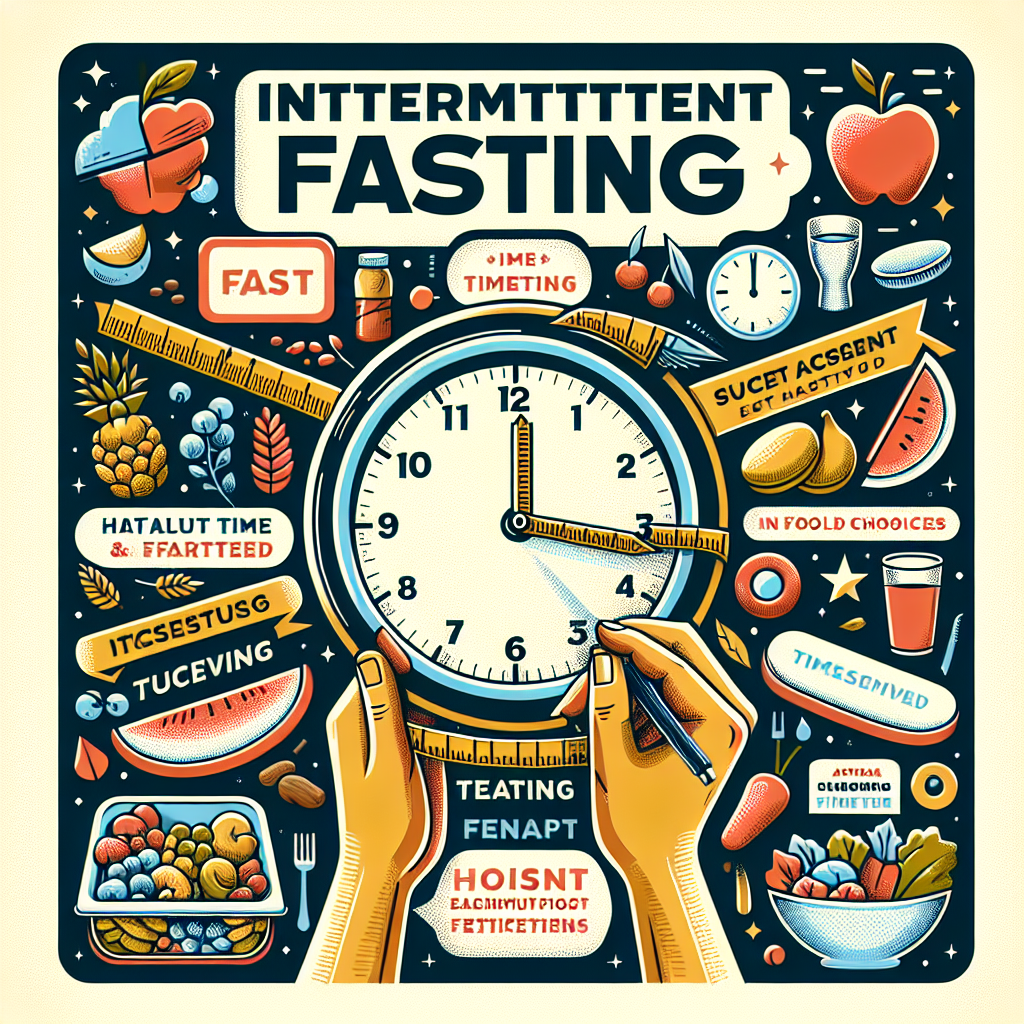Intermittent fasting (IF) has gained immense popularity as an effective way to lose weight, improve metabolic health, and enhance mental clarity. However, navigating the world of intermittent fasting can be challenging. To make it work for you, it’s important to approach it with a strategy that fits your lifestyle. Here are some essential tips and tricks to help you succeed.
Understanding Intermittent Fasting
Before diving into practical tips, it’s crucial to understand what intermittent fasting is. IF is an eating pattern that alternates between periods of fasting and eating. Common methods include:
- 16/8 Method: Fast for 16 hours and eat during an 8-hour window.
- 5:2 Diet: Eat normally for five days of the week and limit calorie intake to around 500-600 calories on two non-consecutive days.
- Eat-Stop-Eat: Involves fasting for 24 hours once or twice a week.
Tips to Make Intermittent Fasting Work for You
1. Choose the Right Method
Select a fasting schedule that fits your lifestyle. If you’re a morning person, the 16/8 method ending at noon might work well. If you prefer evenings, consider strategies that allow you to eat dinner at a reasonable time.
2. Stay Hydrated
During fasting periods, drink plenty of water. Herbal teas, black coffee, and other non-caloric beverages can help you stay full and combat hunger pangs. Hydration also supports overall health and can improve your energy levels.
3. Mind Your Macronutrients
When you’re in your eating window, focus on nutritious, whole foods. Incorporate a balance of lean proteins, healthy fats, and fiber-rich carbohydrates. Foods like quinoa, avocados, lean meats, legumes, and plenty of vegetables will keep you satiated longer.
4. Listen to Your Body
Fasting can be uncomfortable at first. Pay attention to your body’s signals; if you’re feeling unwell or excessively hungry, it might be time to adjust your fasting schedule. It’s essential to find a balance that supports your health rather than harms it.
5. Gradual Transition
If you’re new to intermittent fasting, start slowly. Begin with shorter fasting windows and gradually increase them as your body adapts. This can help minimize feelings of deprivation and discomfort.
6. Plan Your Meals
Meal planning is essential. Preparing healthy meals and snacks in advance ensures you have nutritious options ready to go when breaking your fast. This helps prevent unhealthy choices and keeps your cravings in check.
7. Stay Busy During Fasting Hours
Engage in activities that keep your mind off food. Whether it’s reading, exercising, or working on a hobby, staying occupied can help make fasting periods more manageable.
8. Socialize Mindfully
Social events often revolve around food. Communicate your fasting schedule with friends and family, or suggest activities that don’t focus solely on eating. This helps you stick to your plan without feeling left out.
9. Be Flexible
Life can be unpredictable, so allow yourself some flexibility. If you find your schedule disrupted, it’s okay to adjust your fasting periods. Consistency is important, but so is the ability to enjoy life and food.
10. Monitor Your Progress
Keep track of how you feel, changes in your weight, energy levels, and overall health. This can help you identify what works best for you and make necessary adjustments to your approach.
Conclusion
Intermittent fasting can be a powerful tool for improving health and achieving goals, but it’s not a one-size-fits-all solution. By approaching it thoughtfully and tailoring it to your lifestyle, you can find a rhythm that fosters long-term success. Remember, the key is not just to fast but to create a sustainable eating pattern that enhances your well-being. Happy fasting!
